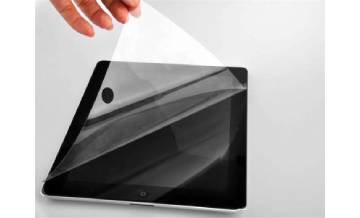The basic characteristics of high temperature resistant PET protective film. The PET protective film series is made of PET as a carrier and combined with acrylic adhesive series adhesive on one side. The release substrate and release substrate are PET release film; PET protective film characteristics: no residual glue after tearing; excellent transparency; no paper scraps during die cutting, high cleanliness; no primer treatment required, can play excellent adhesion to adhesives Adhesiveness; PET protective film use: Suitable for panel protection, such as stainless steel, aluminum plate, name plate, as well as notebook computer case and display, mobile phone screen protection, such as paint surface, film surface, plastic surface, etc. Product color: white transparent, milky white, blue, black, etc.

Pet Protective Film
Basic characteristics of PET protective film:
I. Exhaust: At this point, consumers may have noticed whether it is easy to stick when the protective film is applied, and whether it is quickly and automatically adsorbed. It should be noted that the silicone protective film basically has an automatic exhaust function, which means that you remove the upper and lower release film and place it on a clean screen, and it will automatically attach it, leaving almost no bubbles. However, the speed of automatic attachment is inversely proportional to the adhesive force set by the silicone, that is, the smaller the adhesive force, the faster the exhaust speed, and the larger the adhesive force, the slower the exhaust speed.
II. Static electricity: Because the liquid crystal display is a sensitive device afraid of static electricity, the smaller the static electricity is, the better, the test method is to prepare the protective film (3 layers or two layers) to be tested, smoke a cigarette and knock Soot is on the table, or get a little paper scraps on the table, and then remove the top layer of protective film (this step is required for 3 layers), and then peel off the protective film with silicone layer. When using this layer of protective film, immediately use the layer (silicone surface) near the soot or paper dust to see if the protective film will adsorb these things to the silicone layer of the protective film and whether the degree of adsorption is strong.
III. Transmittance: This point is difficult to identify with the naked eye, it is best to use optical instruments to measure it. Another clumsy method is to cut a small piece of each protective film to be selected and put it in the middle of the computer desktop, and then open A blank WORD file, check the degree of whitening of the blank WORD file in the areas with and without the film or different film areas (professional point is called brightness). By comparing them separately, you can choose the brightest material whose transmission is the best protective film.
IV. Haze: The haze is mainly seen when the display is turned off. After different protective films to be selected are sequentially opened, the more the background color of the screen is, the smaller the haze is. Of course, the better this material is, This method is easier to see the difference if a black test board is used. Another method is to turn on a fluorescent lamp in a slightly dark room, remove the protective film from the upper and lower release films, and then hold it between your eyes and the light with your hand. Carefully see if there is a layer of misty material protecting it. The uniform distribution in the film is the culprit that affects the haze. The more serious this kind of haze is, the larger the haze is, the worse the material is, and the better it is; otherwise, the haze will affect the transmittance rate. Transmission is two different concepts!
V. Anti-scratch: This point is of most concern to everyone, and it is also a basically solved problem. Protective film manufacturer believes that the current scratch-resistant materials in the industry are basically the same (2-3H), with good characteristics. There are only scratch-resistant and non-scratch-resistant. The standard method is to use a Japanese Sanling brand pencil with a hardness of 3H (sold at a stationery store) and push it down at a 45-degree angle at 500G for 10 times. If there is no scratch, it is considered to be 3H. Hardness requirements. The simple method is to use a slightly hard metal device or a freshly cut nail to scrape the normal use of the stylus on the material's use surface. If it is very easy to scratch, it is considered to be non-scratch, and if it is not scratched, it is considered to have anti-scratch function. . The cutting and processing manufacturers should pay more attention to the uniformity of the scratch resistance of the entire batch or batch of materials, because at present, some material manufacturers have failed to achieve the uniformity of coating.
The protective film is coated with a high molecular conductive polymer, which has a low surface resistivity, stable performance and good chemical resistance. It can withstand the erosion of chemical substances and is not affected by the environment such as air. The protective film made of PET has excellent transparency and smoothness, and has excellent surface decoration performance. It can be printed without surface treatment, and can be easily pressed into patterns.
Copyright © Shenzhen Wonder Advanced Material Co., Ltd. All Rights Reserved. |Sitemap| Technical Support: |
|
